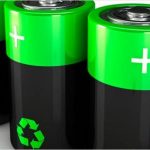
Materials science researchers create monolayer graphene using honey as an essential ingredient
Wednesday, March 07, 2018 by David Williams
http://www.futuresciencenews.com/2018-03-07-materials-science-researchers-create-monolayer-graphene-using-honey-as-an-essential-ingredient.html

The process required in order to create the interesting material called graphene is not a secret. Researchers from the world over have been studying it for many years now to figure out how it can best be used. Now a team of experts in China has devised a method to create the highest quality graphene – monolayer graphene – by adding honey into the mix.
To better understand the potential impact of the study – as well as the resulting method – conducted by the team of Chinese researchers, it might be helpful to familiarize yourself with the current standard definitions for so-called graphene nanoplate products.
First, there’s bulk graphite, which is the term used for more than 10 graphene layers stacked together. Few-layer graphene (FLG) refers to two-dimensional graphene that’s made up of as few as three or up to 10 well-defined stacked graphene layers. Then there’s bi-layer graphene (2LG), which is basically a two-dimensional material that has two well-defined stacked graphene layers.
The last and highest quality graphene is called monolayer graphene (1LG), and it’s just a single layer of carbon atoms, with every atom bound to the three closest neighbors in a honeycomb structure. The process needed to create 1LG is quite expensive, which limits its production. As luck would have it, the study has led to a new process that makes it with very high yield. And what’s more, all it needs is honey.
According to the research team from the Lanzhou University in China, their new process can be described as a simple, green, low-cost method of obtaining high-quality graphene. But the most interesting thing is that it has a high yield of ~91 percent on a three-roll mill, using natural honey for exfoliation.
The researchers said in a statement that natural honey can effectively play the role of an exfoliating media as part of the process. “During the exfoliation of graphite, the viscous medium passes the energy from the three rolls mill to graphite in the form of exfoliation,” they said, “which obtains mono and a few layers of graphene due to the sliding between the layers of the graphite.”
The research team said that they started the process by taking graphite powder and adding natural honey in a 1:8 ratio. They then took this mixture and stirred it at 200 revolutions per minute (RPM) for a total of 10 minutes. Once the stirring was finished, they fed the mixture into the center roll of a three-roll mill, and kept the temperature and humidity constant. They waited for five hours of processing before washing the mixture with distilled water, and they were able to collect the monolayer graphene afterwards.
The new process holds plenty of promise as far as producing high-quality graphene with high yield levels is concerned. It’s like a perfect mix, with natural honey coming in as an essential ingredient in the method – a green solution to a technological problem – and monolayer graphene coming out as a result, the miracle material that can be used for a wide range of future applications. However, the researchers have yet to figure out if their process can be scaled. Until that happens, the method will only serve as a viable proof-of-concept. If they can prove that the process can be scaled, they will likely see commercial success.
Find out more interesting news about science breakthroughs at Science.news.
Sources include:
Tagged Under: Tags: exfoliation, future science, goodscience, Graphene, graphite, honey, inventions, materials science, monolayer graphene, natural honey, superfood





